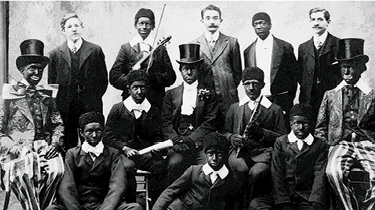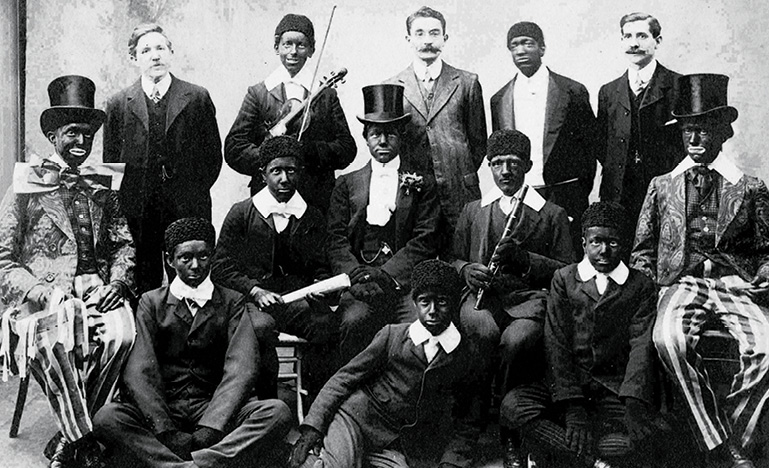Nina Yeboah was a freshman at Georgia State University in 2004 when she heard about a pair of white fraternity brothers who had shown up at a rap-themed party in blackface.
Fifteen years later, she says, it’s still hard to talk about what would become a moment of embarrassment and pain on the Atlanta campus. As a student of color, says Yeboah, “it kind of wakes you up to what racism is like in the community that you’re in.”
Blackface—the use of makeup, shoe polish, or something else to darken one’s face to caricature a black person—has a long, painful history in the U.S., and as Yeboah’s story makes clear, it’s never quite gone away. Now it’s at the center of a political scandal in Virginia. In February, a racist photo surfaced from the 1984 Eastern Virginia Medical School yearbook page of Governor Ralph Northam, a white Democrat, showing a man in blackface next to someone dressed as a Ku Klux Klan (K.K.K.) member.
In 2004, Nina Yeboah was a freshman at Georgia State University in Atlanta. It was then that she heard a pair of white fraternity brothers had shown up at a rap-themed party in blackface.
It’s been 15 years since the incident. But she says it’s still hard to talk about what would become a moment of embarrassment and pain. As a student of color, says Yeboah, “it kind of wakes you up to what racism is like in the community that you’re in.”
Blackface is the use of makeup, shoe polish, or something else to darken one’s face to caricature a black person. The practice has a long, painful history in the U.S., and as Yeboah’s story makes clear, it’s never quite gone away. Now it’s at the center of a political scandal in Virginia. In February, a racist photo surfaced from the 1984 Eastern Virginia Medical School yearbook page of Governor Ralph Northam, a white Democrat. The photo shows a man in blackface next to someone dressed as a Ku Klux Klan (K.K.K.) member.



